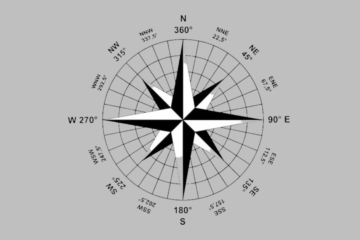In the realm of interior design, there exists a rich tradition that goes beyond aesthetics – Vaastu Shastra. This ancient Indian architectural philosophy offers a comprehensive set of principles for creating harmonious living spaces that resonate with positive energy. By integrating Vaastu principles into interior design, we can cultivate environments that not only look beautiful but also promote well-being on a deeper level. In this blog, we’ll explore the dos and don’ts of incorporating Vaastu principles in interior design.
The Dos :
- Orientation and Layout :
- Do align the layout of your space with cardinal directions (North, South, East, and West) to optimize energy flow.
- Do position key elements such as the main entrance, bedrooms, and kitchen according to Vaastu guidelines to enhance positivity and vitality.
- Balance of Elements :
- Do incorporate the five elements – Earth, Water, Fire, Air, and Space – in your interior design.
- Do use natural materials like wood, stone, and clay to maintain elemental balance and promote a sense of grounding.
- Natural Light and Ventilation :
- Do maximize natural light and ventilation in your space to create a vibrant and uplifting atmosphere.
- Do consider incorporating large windows, skylights, and indoor plants to invite positive energy into your home.
- Color and Décor :
- Do choose colors that align with Vaastu principles, such as soft pastels, earthy tones, and shades of blue and green.
- Do incorporate meaningful décor elements like sacred symbols, artwork, and spiritual artifacts to enhance positive vibrations.
- Functionality and Flow :
- Do prioritize functionality and flow in your interior design to promote ease of movement and accessibility.
- Do arrange furniture and fixtures in a manner that facilitates the natural flow of energy throughout the space.
The Don’ts :
- Clutter and Obstructions :
- Don’t allow clutter to accumulate in your living spaces, as it can disrupt the flow of positive energy.
- Don’t place furniture or décor items in a way that obstructs doorways, windows, or pathways, as it can impede energy flow.
- Negative Elements :
- Don’t incorporate design elements that evoke negative energy, such as sharp corners, broken mirrors, or damaged furniture.
- Don’t use dark and oppressive colors excessively, as they can create a sense of heaviness and stagnation in the environment.
- Imbalance of Elements :
- Don’t neglect the balance of elemental energies in your interior design, as it can lead to disharmony and discomfort.
- Don’t overwhelm the space with one particular element; strive for a harmonious integration of all five elements.
- Inauspicious Placements :
- Don’t place the main entrance or key rooms like the bedroom or kitchen in inauspicious directions, such as the Southwest corner.
- Don’t position mirrors directly facing the bed or dining table, as it is believed to disrupt energy flow and cause disharmony.
- Disregarding Personalization :
- Don’t overlook the importance of personalization and individual preferences in interior design.
- Don’t blindly adhere to Vaastu principles at the expense of creating a space that reflects your unique style and personality.
Conclusion :
Incorporating Vaastu principles into interior design requires a delicate balance of tradition, aesthetics, and functionality. By following the dos and avoiding the don’ts outlined above, you can create living spaces that not only look beautiful but also resonate with positive energy and vitality. Remember that while Vaastu offers valuable guidelines, it’s essential to adapt them to suit your specific needs and preferences. Embrace the wisdom of Vaastu Shastra to design spaces that nurture your well-being and inspire a deeper connection with your environment.




